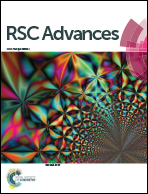High efficiency Mg2(Si,Sn)-based thermoelectric materials: scale-up synthesis, functional homogeneity, and thermal stability†
Abstract
Considering the need for large quantities of high efficiency thermoelectric materials for industrial applications, a scalable synthesis method for high performance magnesium silicide based materials is proposed. The synthesis procedure consists of a melting step followed by high energy ball milling. All the materials synthesized via this method demonstrated not only high functional homogeneity but also high electrical conductivity and Seebeck coefficients of around 1000 Ω−1 cm−1 and −200 μV K−1 at 773 K, respectively. The measured values were similar for all the samples extracted from the ∅50 mm and ∅70 mm compacted pellets and were stable upon thermal cycling. Thermal stability experiments from 168 hours to 720 hours at 723 K revealed no significant change in the material properties. The low thermal conductivity of ∼2.5 W m−1 K−1 at 773 K led to a maximum figure of merit, zTmax, of 1.3 at the same temperature and an average value, zTavg, of 0.9 between 300 K and 773 K, which enables high efficiency in future silicide-based thermoelectric generators.



 Please wait while we load your content...
Please wait while we load your content...